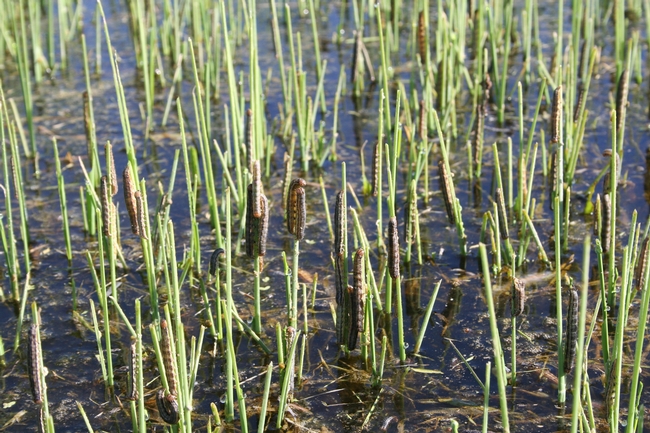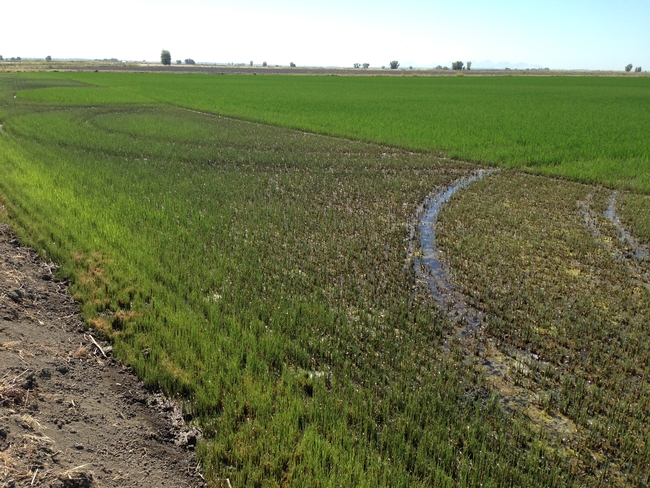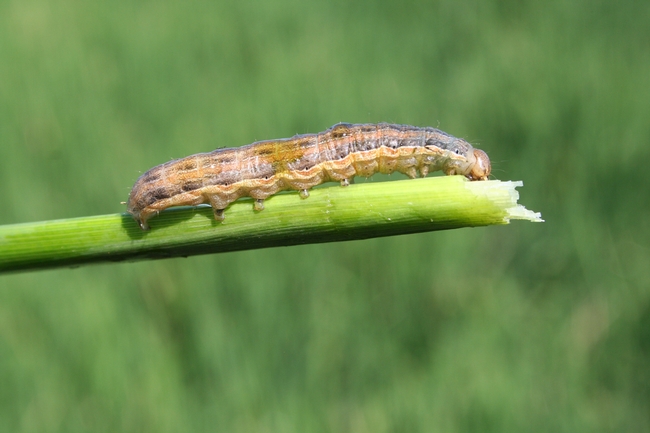Armyworms can be a serious pest in rice. The worms can eat the rice foliate or panicles, and cause yield reductions.
In 2015, a severe outbreak of armyworms caught rice growers by surprise, resulting in yield losses. In a 2018 survey conducted by UC Cooperative Extension, rice growers reported average yield losses in 2015 ranging from 4% to 12%. Since UCCE began a monitoring program in 2016, rice losses to armyworms have been rare, according to Luis Espino, UC Cooperative Extension rice farming systems advisor in Butte and Glenn counties.
To safeguard the rice crop against the pests, UCCE began conducting areawide monitoring of armyworms in 2016 using pheromone traps that attract the moths as they fly around rice fields. The traps are set up in 15 locations of the Sacramento Valley, from Richvale to Knights Landing, and in three sites in the Delta, covering most of the rice production area of California. The traps were set up early in the season and checked weekly until fields are ready to harvest.
“Moth numbers are delivered to more than 1,500 growers and crop consultants weekly via email, so they have a warning system to know when populations are increasing and when to start scouting closely,” Espino said.
“Treatments are not always needed, but armyworm damage can occur quickly and monitoring needs to be increased during the periods of peak moth flight,” he said. During periods of peak flight, the UCCE advisors provide growers with information on how to decide if a treatment is needed.
The information from the armyworm monitoring network, together with efforts by the rice industry to register insecticides that are effective at controlling armyworms, has resulted in better control of armyworms and less yield losses.
“In 2017 and 2018, I'd say yield loss due to armyworms was rare, and probably only happened in a couple of cases,” Espino said. “It's hard to give you hard numbers, but I'd say in 2017 and 2018, yield losses have been reduced to a minimum.”


